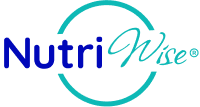When I first heard the words "high blood pressure" from my doctor, my heart sank. At 42, I thought I was too young to be dealing with hypertension, but the numbers on the monitor didn’t lie: 145/90. It wasn’t just a one-off; stress, late-night snacking, and a love for salty takeout had caught up with me. My doctor recommended the DASH diet, and I’ll admit, I was skeptical. A diet to lower blood pressure? It sounded too good to be true. But six months later, I’m down to 120/80, I feel lighter, and I’ve rediscovered my love for cooking. Here’s how the DASH diet became my game-changer—and why it might be yours too.
What Is the DASH Diet?
DASH stands for Dietary Approaches to Stop Hypertension. It’s not a trendy fad or a restrictive cleanse—it’s a sustainable eating plan backed by decades of research. Developed in the 1990s through studies funded by the National Institutes of Health, the DASH diet was designed to lower blood pressure without medication. It emphasizes nutrient-rich foods like fruits, vegetables, whole grains, lean proteins, and low-fat dairy while reducing sodium, saturated fats, and added sugars. The beauty of DASH? It’s not just for hypertension—it’s a heart-healthy lifestyle anyone can adopt.
I was drawn to its flexibility. Unlike other diets that ban entire food groups, the DASH diet felt approachable. It didn’t demand I give up my favorite pasta or desserts; it just asked me to be smarter about portions and choices. For a deeper dive into heart-healthy eating, check out NutriWise, where experts break down nutrition science into practical tips.
Why Hypertension Matters
High blood pressure isn’t just a number—it’s a silent threat. Left unchecked, it strains your heart, damages arteries, and increases risks for stroke, heart attack, and kidney issues. The World Health Organization estimates that 1.28 billion adults worldwide have hypertension, and many don’t even know it. That was me, feeling fine until a routine checkup revealed the truth. Stress from work, a diet heavy in processed foods, and not enough exercise were my culprits. Maybe you can relate.
The DASH diet targets these risks head-on. Studies show it can lower blood pressure in as little as two weeks, even without drastically cutting salt. For me, the results were noticeable in a month—less puffiness, better energy, and a sense of control I hadn’t felt in years.
How the DASH Diet Works
The DASH diet is all about balance. Here’s the breakdown:
- Fruits and Vegetables: Aim for 4–5 servings of each daily. Think colorful plates—berries, spinach, carrots. I started blending smoothies with kale and bananas, which became my morning ritual.
- Whole Grains: 6–8 servings of oats, brown rice, or whole-grain bread. Swapping white rice for quinoa was easier than I thought.
- Lean Proteins: 2 or fewer servings of fish, poultry, or lean meats. I fell in love with grilled salmon—it’s quick and feels fancy.
- Low-Fat Dairy: 2–3 servings of skim milk, yogurt, or cheese. Greek yogurt with fruit became my go-to snack.
- Nuts, Seeds, and Legumes: 4–5 servings per week. A handful of almonds kept my mid-afternoon cravings at bay.
- Limit Sodium: Keep it under 2,300 mg daily (1,500 mg for faster results). This was the toughest part—learning to read labels and ditch the salt shaker.
The diet also encourages cutting back on sugary drinks and red meat. I didn’t eliminate burgers, but I swapped them for veggie-packed stir-fries most nights.
My Journey with DASH
Starting DASH felt overwhelming. I wasn’t a chef, and my kitchen skills were limited to microwaving leftovers. But I began small: swapping chips for carrot sticks, adding spinach to my eggs, and experimenting with herbs like basil and rosemary instead of salt. The first week, I felt hungry—my body craved the salty, processed foods I’d relied on. But by week two, my taste buds adjusted, and I started enjoying the natural flavors of fresh produce.
One game-changer was meal prepping. On Sundays, I’d roast a tray of veggies—zucchini, bell peppers, sweet potatoes—and pair them with grilled chicken or lentils for lunches. It saved time and kept me on track. I also discovered that DASH wasn’t about perfection. A slice of birthday cake at my niece’s party didn’t derail me—it was about consistency, not deprivation.
The numbers spoke for themselves. After a month, my blood pressure dropped to 130/85. By month three, I was at 120/80, and my doctor was thrilled. Beyond the numbers, I felt lighter, slept better, and had energy for evening walks—something I hadn’t done in years.
Tips to Start Your DASH Journey
Ready to try DASH? Here’s what worked for me:
- Start Small: Pick one meal to “DASH-ify.” Add veggies to your breakfast or swap soda for water.
- Read Labels: Sodium hides in canned soups, sauces, and even bread. Aim for low-sodium versions.
- Get Creative with Flavors: Herbs, spices, and citrus can make low-salt meals delicious. Lemon zest on fish is a revelation.
- Plan Ahead: Prep meals to avoid reaching for fast food. A slow cooker became my best friend for hearty, healthy stews.
- Track Progress Monitor your blood pressure at home. Seeing improvements kept me motivated.
Why DASH Is More Than a Diet
The DASH diet isn’t just about lowering blood pressure—it’s about reclaiming your health. For me, it was a wake-up call to prioritize myself. I’m not perfect; I still sneak a few fries now and then. But DASH taught me balance, not restriction. It’s a lifestyle I can stick with, not a quick fix.
If you’re staring down a hypertension diagnosis or just want to eat better, give DASH a try. It’s not about overhauling your life overnight—it’s about small, meaningful changes that add up. My blood pressure is proof, and I’m betting yours could be too. Visit NutriWise for more resources to kickstart your journey. Here’s to healthier hearts and happier plates!

